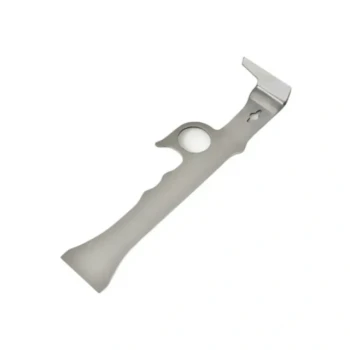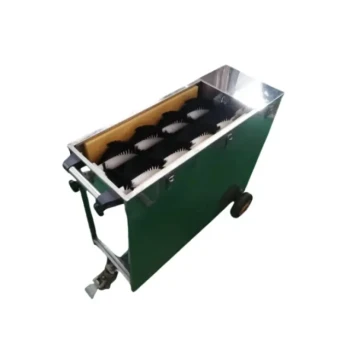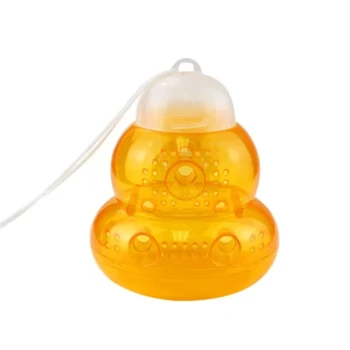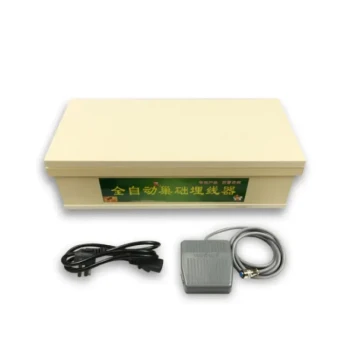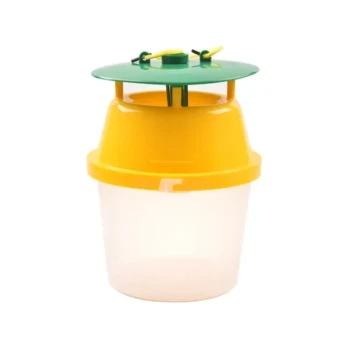To ensure colony health, the recommended stage depends entirely on the season. During the spring population increase, colonies should be kept within Stage 1-2, while during the late spring, summer, and fall, the acceptable range expands to Stage 1-3.
The core principle is not about season, but about health. These stages are a direct measure of Varroa mite damage. The ultimate goal is to keep mite-related stress as low as possible (Stages 1-3) at all times, as Stages 4 and 5 represent a severe decline from which a colony may not recover.
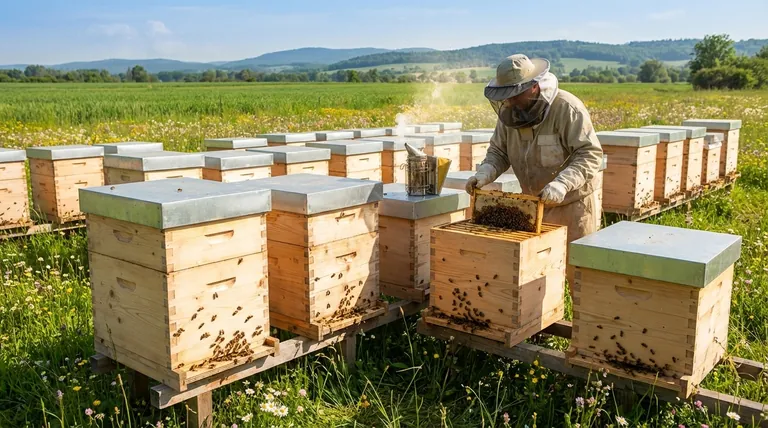
What These Colony Stages Actually Mean
These stages are a visual guide to the health of your bee colony, specifically in relation to the damage caused by Varroa destructor mites. Understanding what to look for is the first step in effective management.
Stage 1: The Ideal Healthy Colony
This is the benchmark for a thriving hive. Brood patterns are solid and contiguous, with very few empty cells. Adult bees appear healthy and active, and you will see no signs of deformed wings or other mite-related symptoms.
Stage 2: Early Signs of Stress
The colony still appears strong, but a trained eye can spot subtle issues. You may notice a few bees with deformed wings or a slight increase in scattered, empty cells within the brood pattern (a "shotgun" appearance). This is an early warning sign that the mite population is growing.
Stage 3: Noticeable Mite Impact
Mite damage is now clearly visible and affecting the colony's productivity. The shotgun brood pattern is more pronounced, and you will see a notable number of bees with deformed wings. The colony's population growth may begin to slow or stagnate.
Stage 4: Severe Infestation and Decline
This is a critical stage indicating a serious problem. You will see significant numbers of bees with Deformed Wing Virus (DWV). The colony population is actively shrinking, and you may find dead or dying larvae (parasitic mite syndrome). The colony is in a state of rapid deterioration.
Stage 5: The Point of No Return
The colony is collapsing. The queen may have failed or disappeared, and the remaining population is small, weak, and riddled with disease. At this point, recovery is highly unlikely, and the hive becomes a risk to other nearby colonies.
Seasonal Goals and Colony Dynamics
The recommended stages are tied to the natural lifecycle of both the honeybee colony and the Varroa mite population.
Spring Population Buildup
In spring, the colony's primary goal is rapid expansion. Starting with a low mite load (Stage 1-2) is essential because both the bee and mite populations will grow exponentially. A healthy start ensures the colony can outpace the mites and build a strong workforce.
Summer and Fall Health
As the season progresses, the mite population inevitably grows, making it harder to maintain a perfect Stage 1. An acceptable upper limit of Stage 3 reflects this reality. The goal is to monitor the colony closely and intervene with treatments before it can slip into the dangerous later stages.
Understanding the Critical Threat
Allowing a colony to reach Stage 4 or 5 is not just a management failure; it's a significant risk to your entire apiary.
The Parasitic Mite Syndrome Cascade
Varroa mites weaken bees by feeding on their fat bodies, which are crucial for immune function. More importantly, they act as vectors for viruses, most notably Deformed Wing Virus (DWV). A high mite load leads to a viral epidemic that quickly overwhelms the colony's defenses.
The Risk of Colony Collapse
A colony in Stage 4 or 5 has lost its ability to function. The workforce is too small and sick to forage, rear brood, or defend the hive. Without immediate and often drastic intervention, total colony loss is almost certain.
The Danger to Other Hives
A collapsing hive is often robbed by stronger, neighboring colonies. This act of robbing transfers mites and viruses to the healthy hives, creating a "mite bomb" that can quickly spread infestation throughout your apiary.
Making the Right Choice for Your Goal
Proactive monitoring and management are the keys to keeping your colonies in the healthy, productive stages.
- If your primary focus is spring buildup: Keep colonies in Stage 1-2 to ensure they have the explosive growth needed to become productive.
- If your primary focus is summer honey production: Tolerate up to Stage 3, but monitor mite levels closely and be prepared to treat before the honey flow ends.
- If your primary focus is preparing for winter: Ensure your colonies are back in Stage 1-2 before cold weather arrives so the "winter bees" are healthy and long-lived.
Ultimately, successful beekeeping is a function of managing Varroa mite populations to keep your colonies strong, healthy, and resilient year-round.
Summary Table:
| Stage | Key Characteristics | Seasonal Goal |
|---|---|---|
| Stage 1 | Solid brood pattern, healthy adult bees, no mite symptoms. | Ideal for spring buildup & winter preparation. |
| Stage 2 | Slight 'shotgun' brood pattern, few bees with deformed wings. | Acceptable for spring; early warning to monitor. |
| Stage 3 | Pronounced shotgun brood, notable deformed wings, slowed growth. | Upper limit for summer/fall; treatment threshold. |
| Stage 4 | Significant DWV, shrinking population, dying larvae. | CRITICAL - High risk of colony loss. |
| Stage 5 | Colony collapse, queen failure, small & diseased population. | POINT OF NO RETURN - Risk to entire apiary. |
Protect Your Apiary's Health and Productivity
Managing Varroa mites is the single most critical factor for successful beekeeping. Equip your operation with the right tools and knowledge to keep your colonies in Stages 1-3.
HONESTBEE supplies commercial apiaries and beekeeping equipment distributors with the high-quality, wholesale-focused supplies needed for effective mite monitoring and control. From testing kits to treatment solutions, we provide the reliable equipment that supports healthy, productive colonies year-round.
Ready to strengthen your hive management strategy? Contact our team today to discuss your needs and explore our product range.
Visual Guide

Related Products
- Wholesales Dadant Size Wooden Bee Hives for Beekeeping
- HONESTBEE Advanced Ergonomic Stainless Steel Hive Tool for Beekeeping
- Commercial Grade Vertical Electric Bee Sweeper for Bee Removal
- Yellow Plastic Bucket Pail Perch for Beekeeping
- Gourd Shaped Hanging Wasp Trap Professional Wasp Catcher
People Also Ask
- What are the essential pieces of equipment for most beekeepers? Get Started with the Right Gear
- What are the advantages of wooden bee hives? Superior Bee Health & Beekeeper Flexibility
- How often should the area under beehives be inspected and cleaned during the warm season? A Proactive Maintenance Guide
- What types of products are available for beekeeping needs? Essential Equipment for Apiaries & Distributors
- What should you do if you find an ant nest near your beehive? Essential Strategies for Hive Protection

